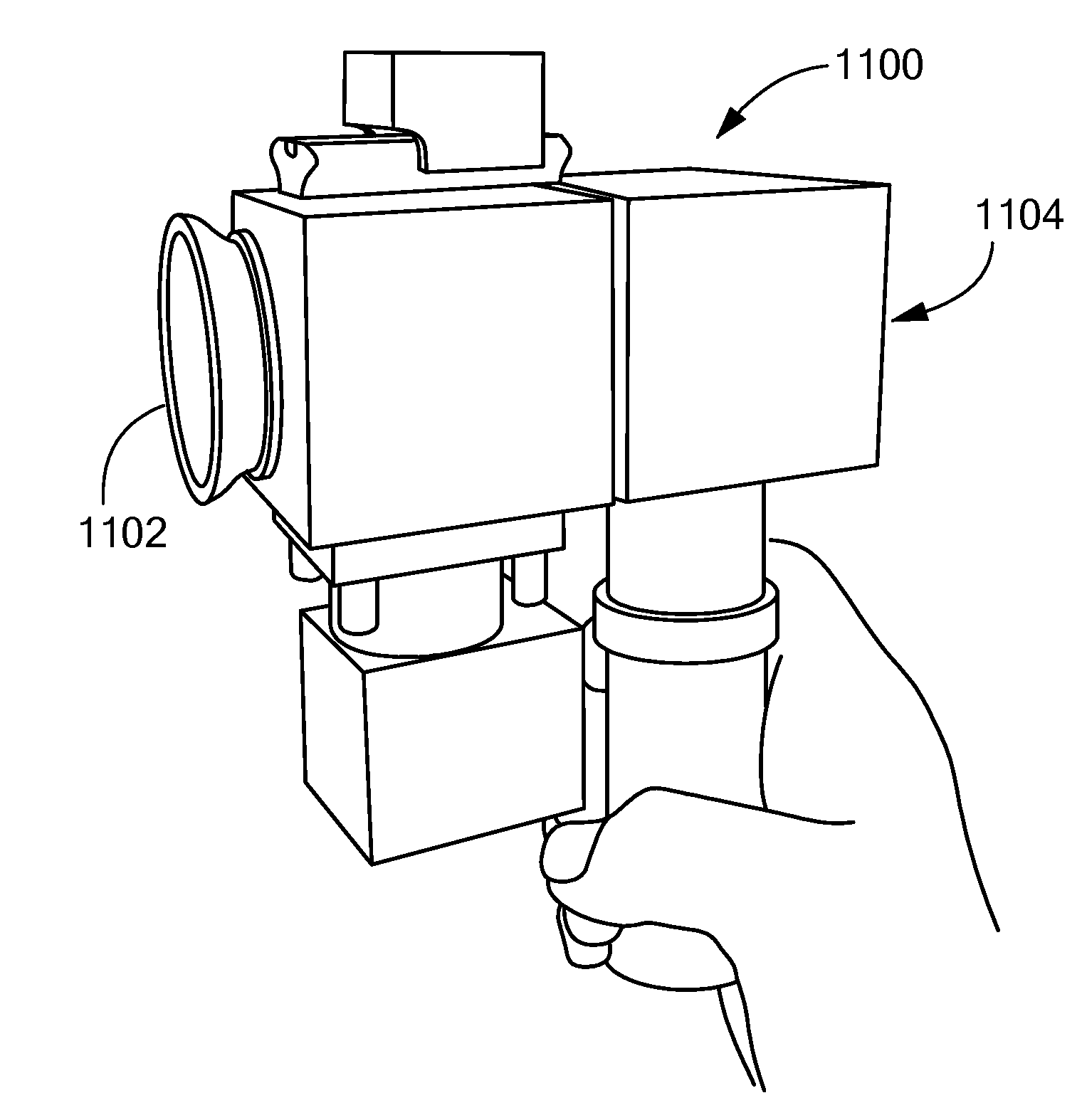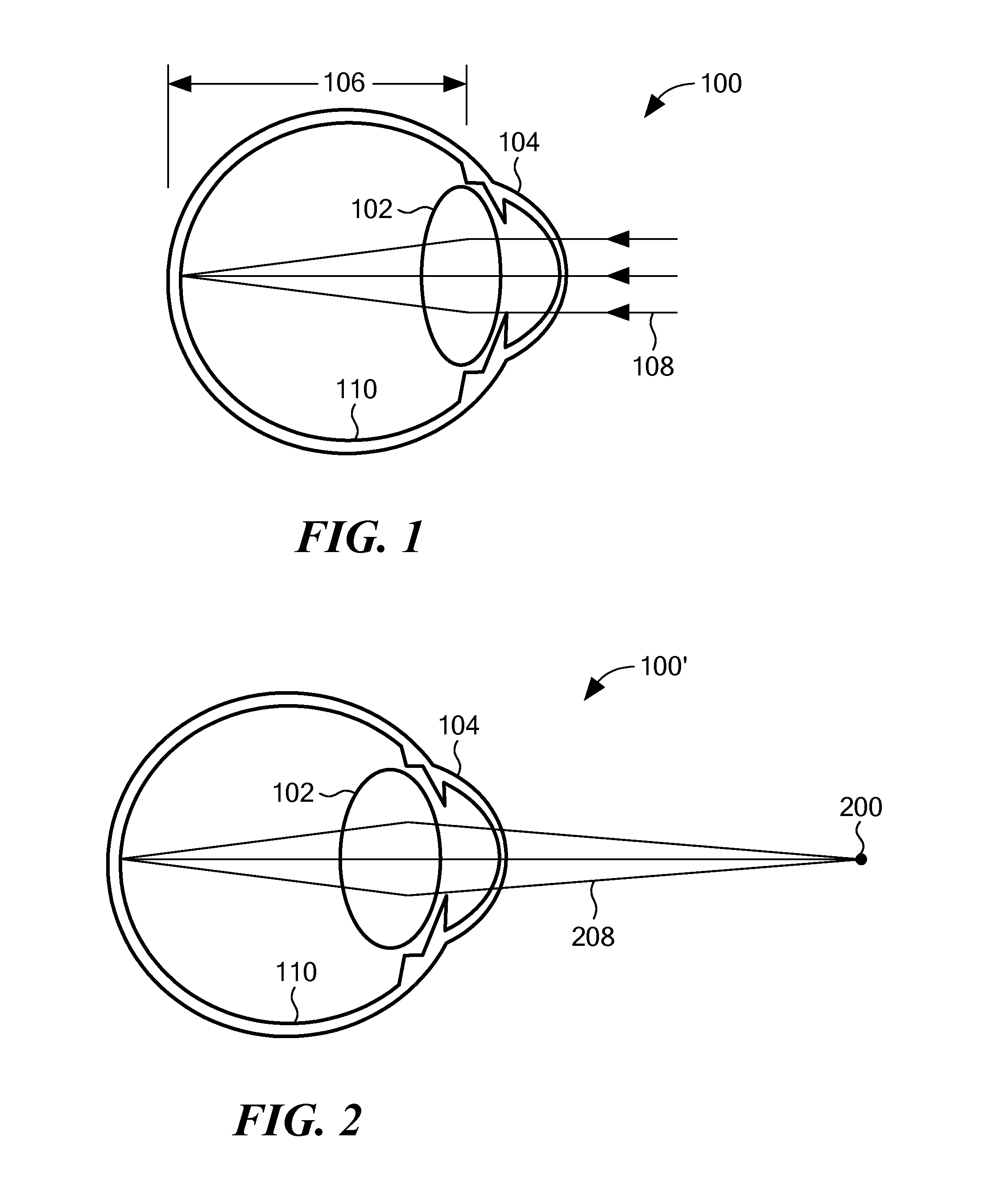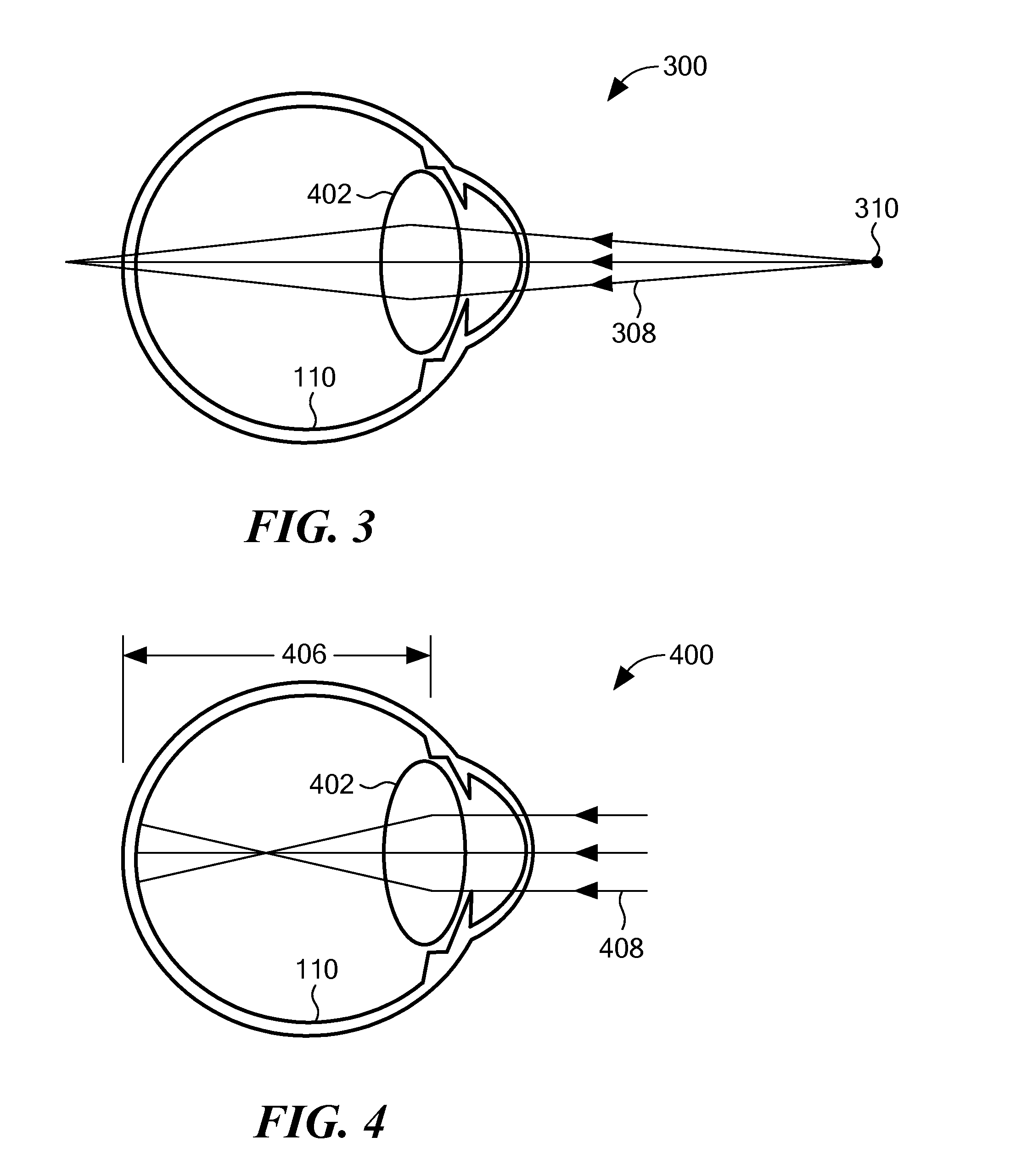Apparatus and Method of Determining an Eye Prescription
a technology applied in the field of optical or ophthalmologic methods and apparatuses, can solve the problems of eye problems such as more complex imperfections, progressively more difficult to focus on close objects, and eye irritation, so as to mitigate noise, mitigate noise, and mitigate nois
- Summary
- Abstract
- Description
- Claims
- Application Information
AI Technical Summary
Benefits of technology
Problems solved by technology
Method used
Image
Examples
Embodiment Construction
[0006]An embodiment of the present invention provides a method of determining an optical property of an eye of a living being. The method includes providing an optical apparatus that has a proximal port and a distal port. The proximal port and the distal port together form a visual channel. The eye is aligned with the proximal port. Target indicia are produced at effective infinity. The target indicia are viewable through the visual channel. The eye is focused on the target indicia. Accommodation of the eye is determined, as the eye views the target indicia. An optical property for the eye is calculated, as a function of the determined accommodation.
[0007]Data may be gathered relating to accommodation of the eye. Calculating the optical property may include using the data relating to accommodation to identify when the eye is accommodating and when the eye is not accommodating. Calculating the optical property may include selecting data relating to when the eye is not accommodating t...
PUM
 Login to View More
Login to View More Abstract
Description
Claims
Application Information
 Login to View More
Login to View More - R&D
- Intellectual Property
- Life Sciences
- Materials
- Tech Scout
- Unparalleled Data Quality
- Higher Quality Content
- 60% Fewer Hallucinations
Browse by: Latest US Patents, China's latest patents, Technical Efficacy Thesaurus, Application Domain, Technology Topic, Popular Technical Reports.
© 2025 PatSnap. All rights reserved.Legal|Privacy policy|Modern Slavery Act Transparency Statement|Sitemap|About US| Contact US: help@patsnap.com



